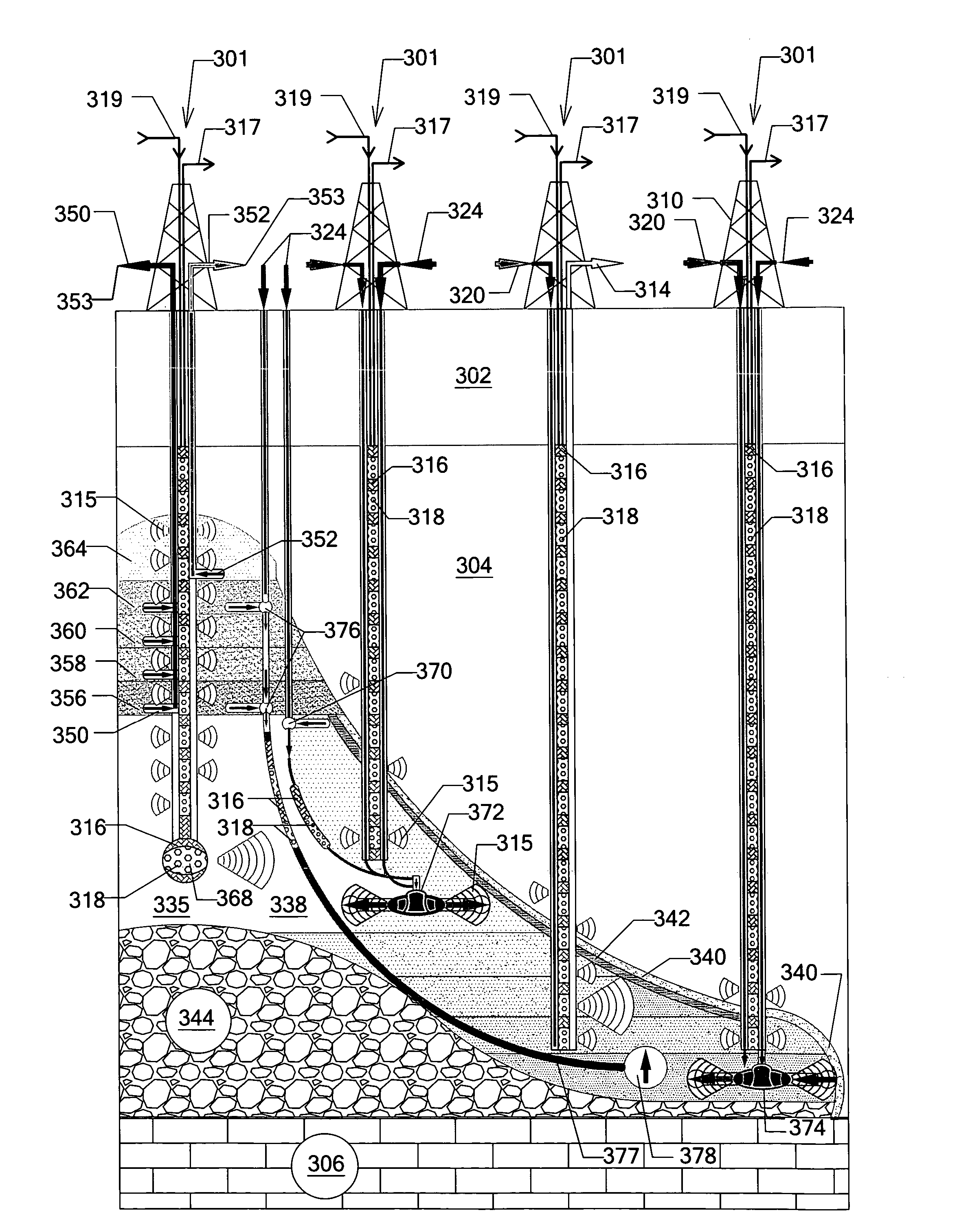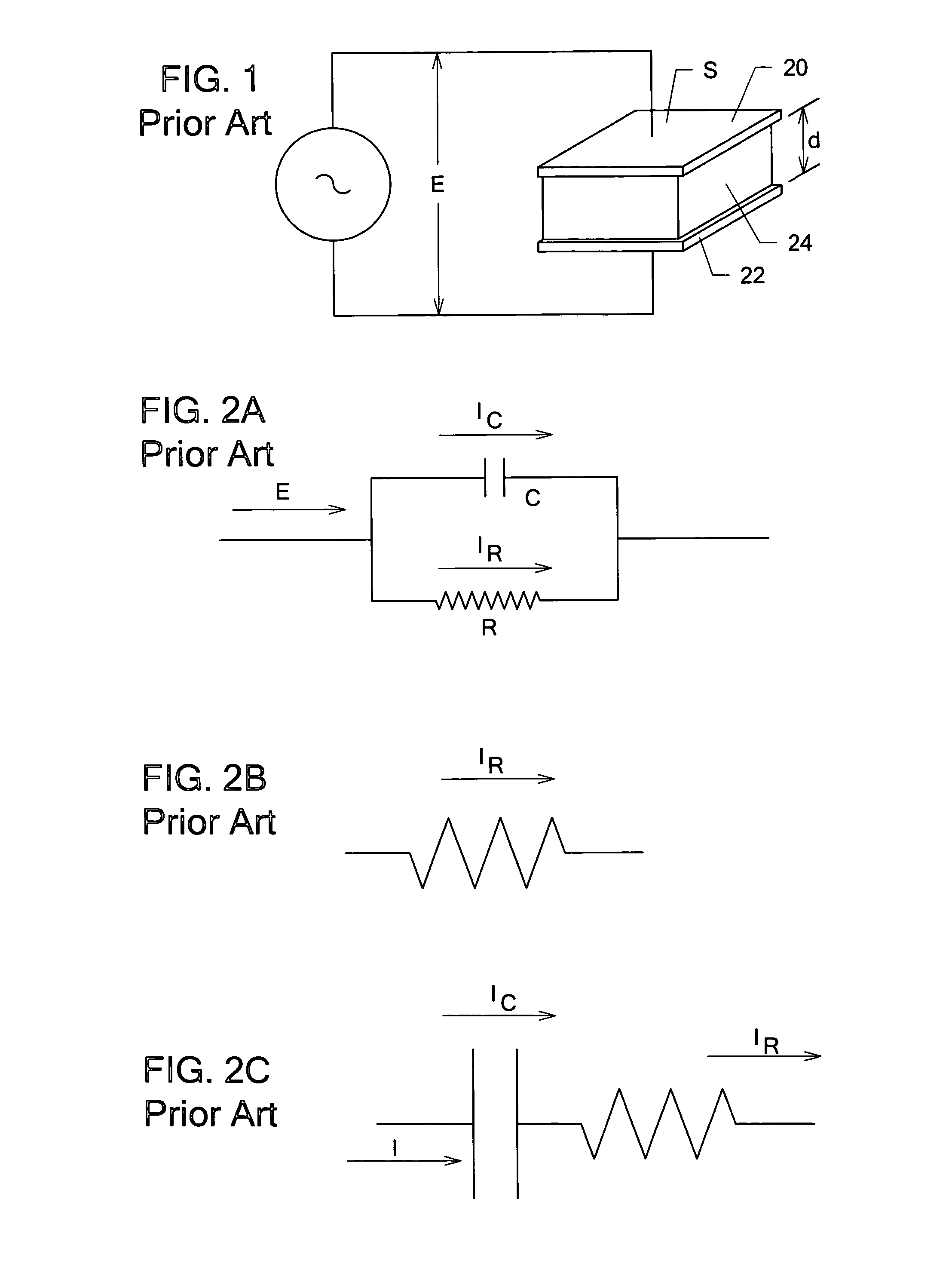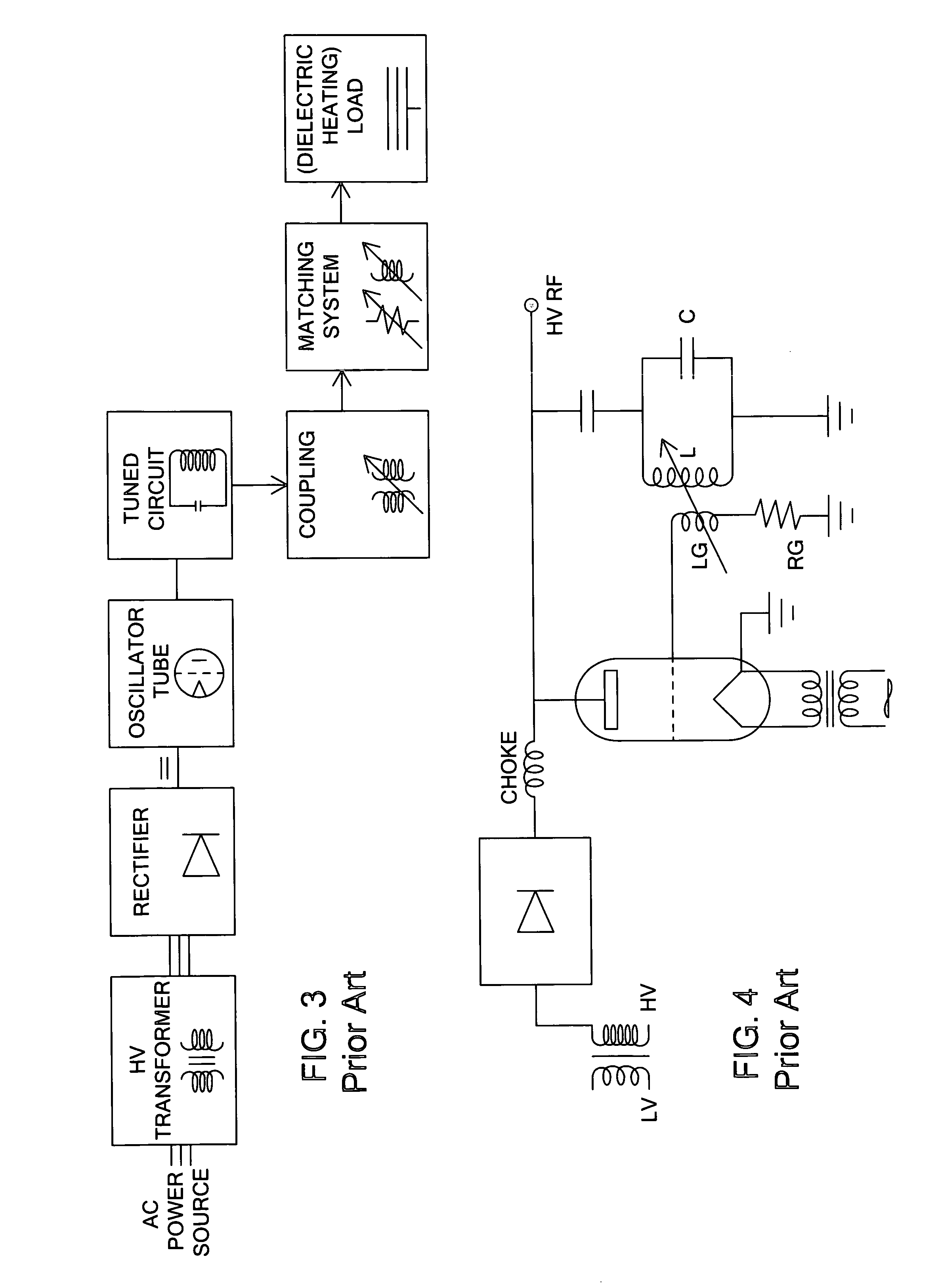Large-scale commercial exploitation of certain hydrocarbon-bearing resources, available in huge deposits on the North American continent, has been impeded by a number of problems especially cost of extraction and potentially significant negative environmental
impact.
Oil shale is also plentiful in the United States, but the cost of useful fuel
recovery has been generally noncompetitive.
In addition, heavy or
viscous oil is often left untapped in a conventionally-produced
oil well, due to the extra cost of extraction.
In practice, however, the limited efficiency of this process has prevented achievement of large-scale commercial application.
The handling of the large amounts of material is, in itself, a problem, as is the disposal of wastes.
Also, substantial energy is needed to heat the shale, and the efficiency of the heating process and the need for relatively uniform and rapid heating have been limiting factors on success.
Such
processing potentially results in huge, negative environmental impacts.
Consequently, non-uniform heating results in inefficient overheating of portions of formations in order to obtain at least minimum average heating of the bulk of the formations.
As in other proposals, the process depends on the inherent conduction ability, which is limited even under the best of conditions, of the formations.
However, as the formations are heated and water vapors are removed from it, the formations become more resistive, and greater currents are required to provide the desired heating.
In general, the above-mentioned techniques are limited by the relatively low thermal and electrical
conductivity of the bulk formations of interest.
Thus, the inefficiencies resulting from non-uniform heating render existing techniques slow and inefficient.
This process requires enormous amounts of high-pressure steam that is typically generated with
natural gas.
On the down side, as price of
crude oil increases, the price of
natural gas generally rises accordingly, increasing the cost of employing steam flood methods.
The steam flood method has been blamed for disrupting
natural gas pressures; so the gas producers want to extract their natural gases prior to bitumen recover.
The loss of the natural gas reservoir can make the steam flood process uneconomical.
Controlled or uniform temperature heating of a hydrocarbonaceous volume to be recovered is desirable, but current methods cannot achieve this goal.
Instead, current methods generally result in non-uniform temperature distributions, which can result in the necessity of inefficient overheating of portions of the formations.
Extreme temperatures in localized areas may cause damage to the producing volume such as
carbonization, skinning of the paraffin waxes, and arcing between the conductors can occur.
Furthermore,
vaporization of water creates steam that negatively affects the passage of frequency
waves to the substances that require heating.
None of the previous proposals for the extraction of hydrocarbons from these types of formations have provided a method of separating the
foreign matter from the valuable hydrocarbons prior to extracting to the surface of the earth.
The washing of sand from heated oils generally requires steam or other energy consuming processes.
As a result, a substantial negative environmental
impact, with respect to disposal of the undesirable
foreign matter, would exist if enough hydrocarbons were extracted to support a North American or global demand of oil.
Another problem with washing the sand from the oil is the amount of water that would be required for large-scale production.
Disposing of the undesirable organic and inorganic substances such as
heavy metals,
sulfur, etc that would be separated from the hydrocarbons would impose additional environmental challenges.
Furthermore, extracting large amounts of heated bitumen and heavy oils to the surface of the earth can release sizable amounts of
greenhouse gases and other pollutants into the
atmosphere during the ensuing washing, crude storage, separating, and refining processes.
A specific
disadvantage of known capacitive RF
dielectric heating methods is the potential for
thermal runaway or hot spots in a heterogeneous medium since the dielectric losses are often strong functions of temperature.
Another
disadvantage of capacitive heating is the potential for dielectric breakdown (arcing) if the
electric field strengths are too high across the sample.
Heating occurs because these polar molecules encounter interactions with neighboring molecules, resulting in lattice and frictional losses as they rotate.
These losses get higher as the frequency of the applied
signal is increased for a fixed
electric field intensity or
voltage gradient due to higher speed interactions with the neighboring molecules.
This
high frequency limitation is inversely proportional to the complexity of the polar molecule.
Such a narrow operating band does not allow for tuning of the impedance.
Therefore, to the extent that the known
system provides any control, such control is not precise, robust, real time or automatic.
 Login to View More
Login to View More  Login to View More
Login to View More 


